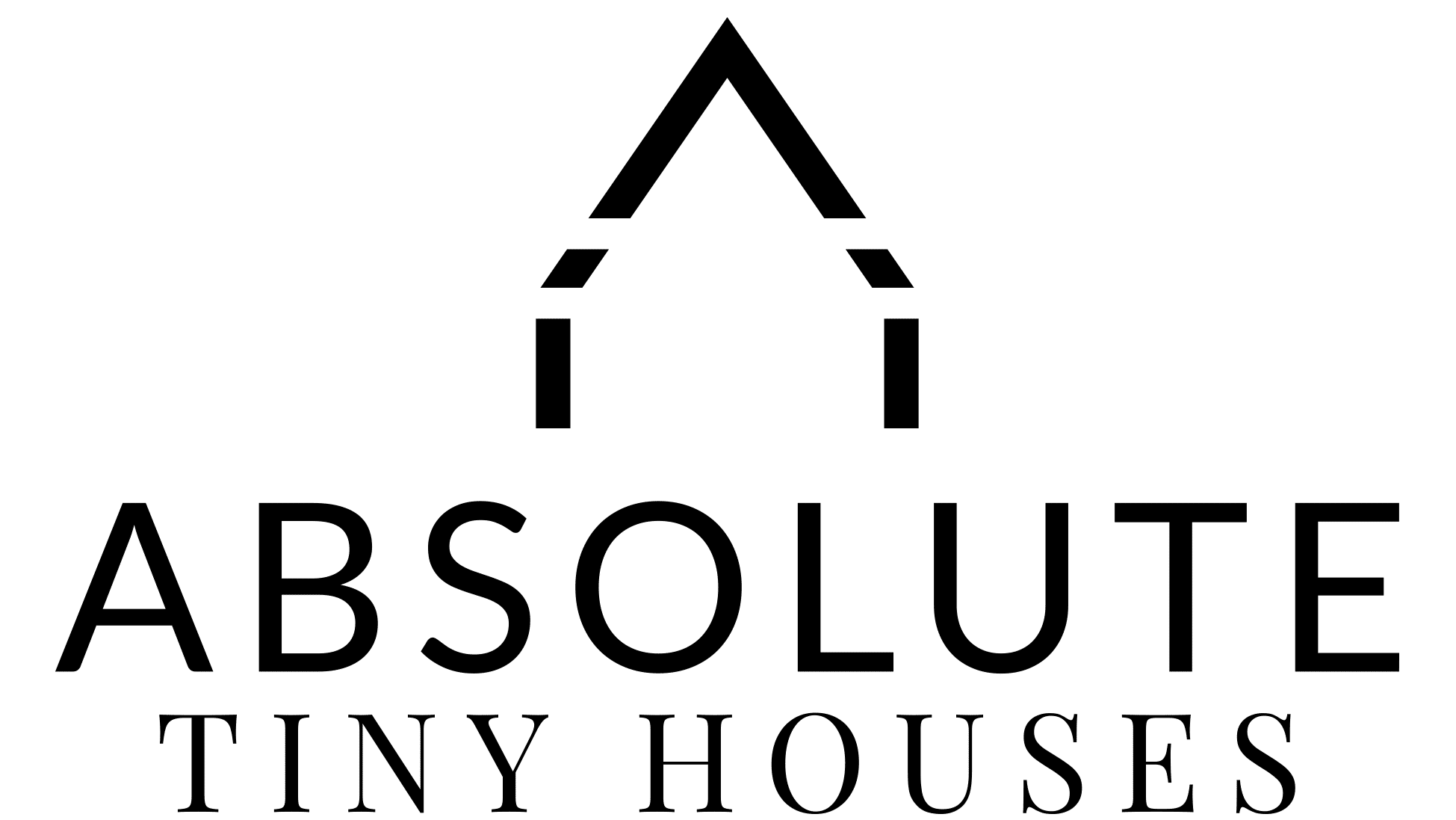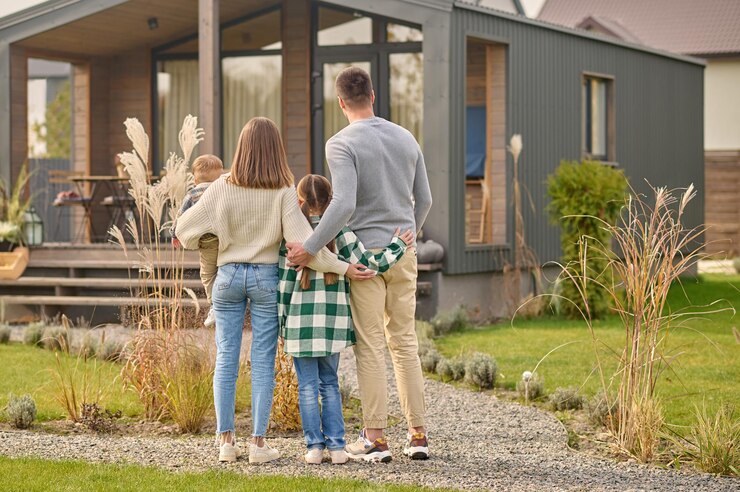It is not a secret. It is a time-tested formula anyone can use.
Here at Absolute Tiny Houses, we call it the ‘Design for Living’ formula.
Design for Living Formula
Where lifestyle, flow and design intercept.
We work with you to understand your lifestyle and needs and then we work on the functional flow to make your vision come to life.
Our, ‘How to design a tiny home’ guide provides you with 4 Rules and 8 Tips to help you create your inspiring tiny home. We provide numerous tiny home ideas for you to ponder and explore as well as some practical tiny home storage solutions. Our guide takes you through what interior designers and architects pay attention to in order to create inspiring homes. We are happy to share these rules and tips with you to help us collectively get it right and to keep the budget tight.
Rule #1. Understand your lifestyle and needs
We start with understanding your lifestyle and needs as it informs the functional flow of your tiny home.
If you have not thought about this in any detail, we suggest that you jump into our post; “7 mistakes made while designing a tiny home”.
In this post we start by talking about “Position is King” and maximising the natural surrounds. This is one of the most important aspects an architect works with. Once we understand where you may want to position your tiny home, you are ready for the next step.
Again, in that post we talk about doing a walk through. Here’s an excerpt,
Image waking up in your bed and doing your usual morning stretch as the day comes into focus for you. What is the first thing you will see, a cupboard, a door, a view (or your blinds)? Get up and walk through your morning routine. Make your coffee, where do you go to sit? Walk through your whole day this way.
As you visualise your walk though, jot down what’s important to you. This helps us design a home that meets your lifestyle.
Tip #1 – Do a visual walk though
Let’s go a little deeper. What do you need and what comes to mind when you look at the below list?
- Rooms – open plan, one bedroom or two
- Living spaces – indoors, outdoors
- Working spaces – computer spot, workbench, music nook, book nook
- Living with others or on your own – a space to escape to, how do you think you will share the open space.
- Storage and finding homes for your bits and pieces.
Make notes. Discuss them, explore them. Especially If you are intending to share your tiny home with others. What are their thoughts and expectations? These two activities are the most important discussions you could have and typically what an architect would go over with you.
When you talk to Michael about your tiny home dream, he wants to know and understand your thoughts and ideas. That way we can work together on a design that works specifically for you.
Tip #2 – Know your yourself, your lifestyle and needs
Knowing yourself is tricky. Why? It is tricky for many reasons. Primarily most of us only truly know ourselves based on the experiences we have been in. We might have an idea how we think we might handle a situation; however, we don’t really know ourselves until we are in the actual situation.
Here are some of the relevant reasons it could be hard to truly know yourselves:
- Moving towards tiny home living is a significant change for you.
- You are transitioning to retirement or semi-retirement and will be at home more.
- You are leaving the city for a tree change or sea change.
- You are heading towards a different financial position, or
- A combination of some of the above.
We suggest that you bear in mind, that as you transition from where you are to tiny home living, you will learn, adapt and grow. Some things you will like, some things you will not like and you will adapt, adjust, change and work things out. Don’t expect to know everything all at once. That is impossible. That’s why research and lots of good questions and good conversations are important.
One of the biggest challenges is adapting to a smaller space. It will help if you understand what sort of an organiser you are. In bigger spaces it is not so important to be organised. Personally, I recall when I was 17 and left home, I fitted everything in my mother’s car, one trip was all that was required. The second move, I needed two car trips… You get the idea. We grow to the space we give ourselves.
As you transition to tiny home living ask yourself “are you a:
- Neat freak, either:
- in a Vogue cover kind of way or
- simply like to have things put away?
- Quick organiser, either:
- every now and again you do a quick sweep through and tidy up?
- every day you clean and organise things to avoid a big clean later.
- Fair weather-organiser, when things are ‘kinda’ getting out of hand you make yourself tidy up, eventually.
- Hoarder, who does not want to let anything go.
All of the above are real possibilities that take on different dimensions when you go tiny. Learning how to cope with them is important.
Conversations about your needs are important. They are part of your reality check. I, for example, had this idea that once I was in tiny home that I would be able to live a minimalist life. I found it easier in a bigger house, as it was easier to have a homes for things. It was and still is a much bigger challenge in a tiny space. I sometimes feel like a hoarder, which I never felt like in my house.
Some people hold the school of thought that is; If you find it hard to be tidy now, you will probably find it hard in your tiny home. There is an element of logic to that thinking. So, if you don’t want to set yourself up for failure, you need to design for living rather than being on the cover of Vogue Tiny Living Edition.
Rule #2 – Create functional flow
This is where we can really help you. We have been building tiny homes since 2016 and we continually focus on how our customers use their space.
Tip #3 – Get the basics right
By getting the basics right, I am referring to floor plan and room positioning. We are considering traffic flow and how you would move from room-to-room, and between functional areas. Navigating obstacles in a tiny home is the fastest way to fall out of love with tiny home living.
Tip #4 – Consider functional areas and create focal points
Creating your functional areas and focal points is often considered the speciality of an interior designer. However, we can all do it. Grab a piece of paper and start sketching. At this stage it does not need to be perfect. Rough out your ideas. You start with placing your larger items where you think you would like them. Then place the smaller items, now we think about the detail of lighting, power points and heat pumps etc. They all have to fit without crowding you out. As you refine your ideas, grab a ruler and start to be more accurate with dimensions. Afterall, you don’t want to move your favourite couch in – only to discover it leaves no room for everything else.
As you start to create your functional areas, you can start thinking about how to make the functional areas a focal point. How do you want to style each area? What draws your eye in and how do you tie the different spaces together? Our next tip will help you with this.
Tip #5 – Explore alternate ways to create rooms and define functional spaces
In most cases, tiny homes have an open floor plan, kitchen, dining and lounge area. The fact that you don’t have separate rooms does not mean you can’t delineate each space.
A rug on the floor, can delineate the lounge from the dining area. Pendant lights over the kitchen bench further defines the space between dining and lounge. A small rug under a hall table and chair defines a desk / computer working area. Your material choices will also go a long way to define functional spaces.
Consider ways to use the space around your tiny home. A covered deck becomes a second living room. A BBQ on the deck becomes the summer kitchen. An outdoor shower creates a holiday resort kind of feel. There are many great sources for ideas. I would start at our Facebook Page or Pinterest.
Rule #3 – Embrace smart design
Smart design can reduce overcrowding and help maintain a sense of space. There are a couple of ways to do this.
Tip #6 – Maximise functional space with multi-function furniture.
Multi-function furniture options include built in furniture such as beds with built in storage. It could be in the form of a lift up bed where the bed is hinged to enable the top of the bed to be raised. Alternatively, it could be with drawers underneath it. Many couches are available with under seat storage. A great way to keep things nearby but out of the way until required.
Other tips include:
- Embracing Functional Display areas:
- An overhead hanging rack of pots and pans in the kitchen
- Hanging your guitar on the wall. Chances are you will play it more.
- Maximising the use of Vertical space:
- Slim rolling storage shelves used for anything from pantry space to books to toys and much more.
- Overhead cupboards, not only add extra storage they keep the floor space clear and create a sense of openness.
- Use wall hooks
- Create a corner nook
Tip #7 – Save space with genius product selection, maximise functional space
It is time to do some research. This is a fun thing to do. There are awesome brands out there that have brilliant space saving products.
Here are some off my favourite brands that offer:
- Joseph Joseph, offers great smart design across numerous kitchen and home ware products. Check out their stacking 9 piece ‘Simple Hospitality’ bowls. This could be all you need as far as kitchen bowls are concerned.
- Brunner, caters for the RV market with a great range of melamine dinner sets. Check out their stacking ‘Odette’ set.
- Koziol also caters for the RV market and is made of 100% natural materials and virtually unbreakable. Check out their ‘Gothenburg’ set.
All of the above are well known brands and are not the cheapest products on the market. Look out for sales and search online as there are not so well-known brands producing similar products at more reasonable prices.
Don’t forget to check out second-hand stores and Marketplace for quality products.
Rule #4 – Maximise the use of natural light
We will work with you to understand where you want to place your tiny home on your section.
The previously mentioned walkthrough activity will help us identify the optimum position of the rooms and windows to maximise view, breeze, light and warmth. These will help give you a sense of space. Additionally, a well-placed mirror will transport the light and views through your home further creating space.
Tip#8 – Use natural light to create openness
One of the simplest ways to create a sense of openness is to use natural light. Understand where it comes from and design the floor plan to allow the light stream in the places you want it too. It is very simply
Tip #9 – Use colour to create feeling
One of the easiest ways to add style is by adding colour.
You can use colour in many ways. You can deliberately go for a warm colours creating warmth, energy and excitement. Cool colours can be used to create a calm, relaxed and serene environment. Neutral colours provide a versatile background to add feature colours too. Let colour be an extension of you.
Allow you mind to explore the options ahead of you. There are a lot of AI tools popping up that you can simply explore the various colour palette. Find a photo, a piece of furniture or a colour you like and see what AI suggests for you. Alternatively, if you are like me, you will have some favourite pieces that you will style your home around. I also love fossicking at different op shops and on-line markets for that magical piece I did not know I needed.
Getting creative and get started
You don’t need a big budget, architects and interior designers to design and style your tiny home. It is all free. Explore these ideas, post your ideas in our Facebook group and have fun. It is a wonderful way to get started on your tiny home adventure.
FAQs
Built in storage optimises your storage, often creating multipurpose areas, reduces the need for extra furniture and ultimately creates more space.
Yes you can. There are two stages in the process to do this. We start by talking through your thoughts to gain a better understanding of understanding of what’s important to you. We take those ideas and draft over the floor plan for your approval.
An open floor plan suits some situation better than others. An individual living on their own, may suit a studio style tiny home with the only room being for the amenities. While others, especially if they are sharing will want the sleeping quarters separated from the remaining living area. Generally speaking, the kitchen dining and living areas are all open floor plan.





